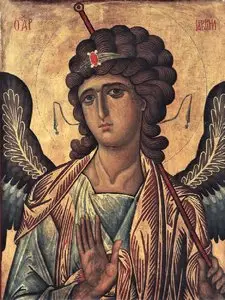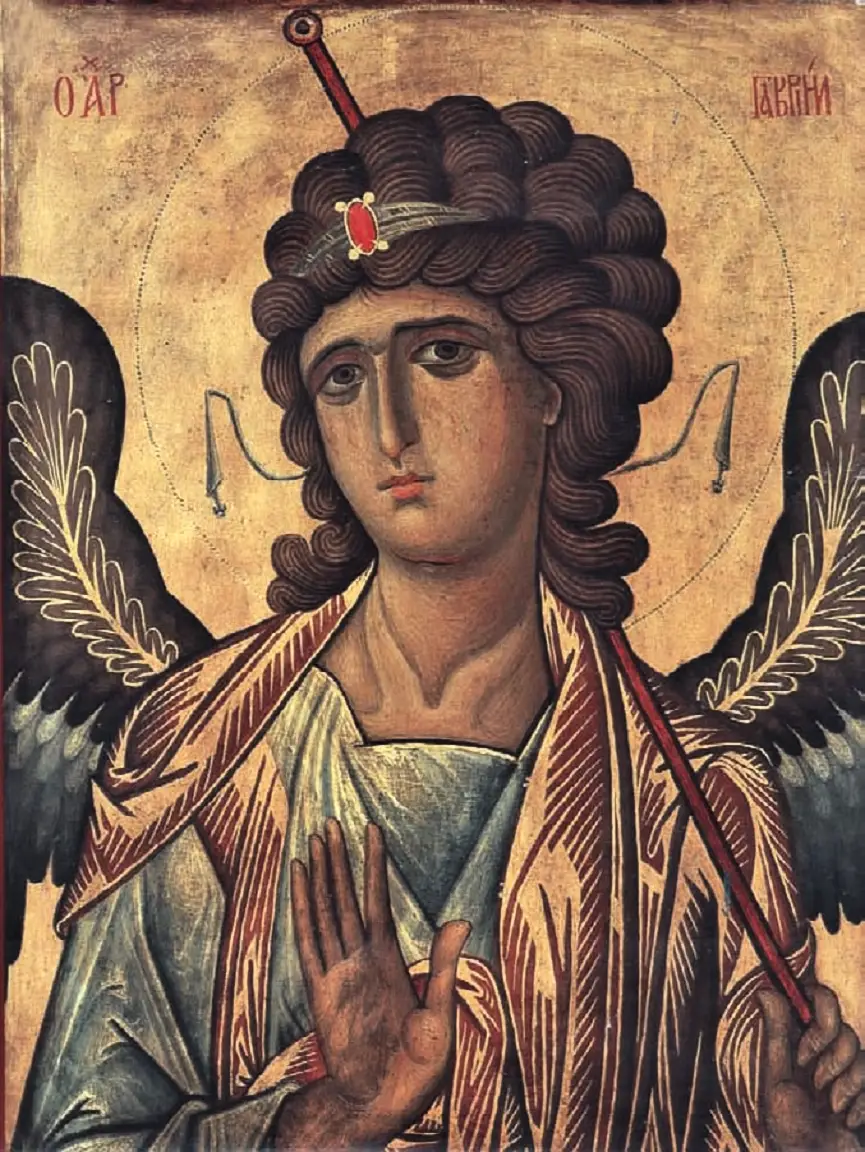Evans, Helen C., "Byzantium: Faith and Power (1261–1557)"
Publisher: Metropolitan Museum of Art/Yale n Pr | 2004 | ISBN: 1588391132/030010278X | English | PDF | 658 pages | 98.32 Mb
Publisher: Metropolitan Museum of Art/Yale n Pr | 2004 | ISBN: 1588391132/030010278X | English | PDF | 658 pages | 98.32 Mb
The fall of the Byzantine capital of Constantinople to the Latin West in 1204 during the Fourth Crusade abruptly interrupted nearly nine hundred years of artistic and cultural traditions. In 1261, however, the Byzantine general Michael VIII Palaiologos triumphantly re-entered Constantinople and reclaimed the seat of the empire, initiating a resurgence of art and culture that would continue for nearly three hundred years, not only in the waning empire itself but also among rival Eastern Christian nations eager to assume its legacy. Byzantium: Faith and Power (1261–1557), and the groundbreaking exhibition that it accompanies, explores the artistic and cultural flowering of the last centuries of the "Empire of the Romans" and its enduring heritage.
Conceived as the third of a trio of exhibitions dedicated to a fuller understanding of the art of the Byzantine Empire, whose influence spanned more than a millennium, "Byzantium: Faith and Power (1261–1557)" follows the 1997 landmark presentation of "The Glory of Byzantium," which focused on the art and culture of the Middle Byzantine era—the Second Golden Age of the Byzantine Empire (843–1261). In the late 1970s, "The Age of Spirituality" explored the early centuries of Byzantium's history. The present concluding segment explores the exceptional artistic accomplishments of an era too often considered in terms of political decline. Magnificent works—from splendid frescoes, textiles, gilded metalwork, and mosaics to elaborately decorated manuscripts and liturgical objects—testify to the artistic and intellectual vigor of the Late and Post-Byzantine era. In addition, forty magnificent icons from the Holy Monastery of Saint Catherine, Sinai, Egypt, join others from leading international institutions in a splendid gathering of these powerful religious images.
While the political strength of the empire weakened, the creativity and learning of Byzantium spread father than ever before. The exceptional works of secular and religious art produced by Late Byzantine artists were emulated and transformed by other Eastern Christian centers of power, among them Russia, Serbia, Bulgaria, and Cilician Armenia. The Islamic world adapted motifs drawn from Byzantium's imperial past, as Christian minorities in the Muslin East continued Byzantine customs. From Italy to the Lowlands, Byzantium's artistic and intellectual practices deeply influenced the development of the Renaissance, while, in turn, Byzantium's own traditions reflected the empire's connections with the Latin West. Fine examples of these interrelationships are illustrated by important panel paintings, ceramics, and illuminated manuscripts, among other objects. In 1557 the "Empire of the Romans," as its citizens knew it, which had fallen to the Ottoman Turks in 1453, was renamed Byzantium by the German scholar Hieronymus Wolf.
The cultural and historical interaction and mutual influence of these major cultures—the Latin West and the Christian and Islamic East—during this fascinating period are investigated in this publication by a renowned group of international scholars in seventeen major essays and catalogue discussions of more than 350 exhibited objects.
Statement by His All Holiness Bartholemew, Archbishop of Constantinople, New Rome, and Ecumenical Patriarch of the Orthodox Christian Church
Sponsors' Statements
Director's Foreword
Acknowledgments
Lenders to the Exhibition
Contributors to the Catalogue
Note to the Reader
Map: Byzantium and Its Neighbors, 1261–1577
Byzantium: Faith and Power (1261–1557)
Helen C. Evans
Revival and Decline: Voices from the Byzantine Capital
Alice-Mary Talbot
Catalogue numbers 1–33
Religious Settings of the Late Byzantine Sphere
Slobodan Ćerurcic
Catalogue numbers 34–48
Sculpture and the Late Byzantine Tomb
Sarah Brooks
Catalogue numbers 49–59
Liturgical Implements
Anna Ballian
Catalogue numbers 60–76
Images: Expressions of Faith and Power
Annemarie Weyl Carr
Catalogue numbers 77–125
Images of Personal Devotion: Miniature Mosaic and Steatite Icons
Arne Effenberger
Catalogue numbers 126–49
Precious-Metal Icon Revetments
Jannic Durand
Catalogue numbers 150–55
Manuscript Illumination in Byzantium, 1261–1557
John Lowden
Catalogue numbers 156–76
Liturgical Textiles
Warren Woodfin
Catalogue numbers 177–200
The Icon as a Ladder of Divine Ascent in Form and Color
His Eminence Archbishop Damianos of Sinai, Faran, and Raitha, Abbot of the Greek Orthodox Monastery of Saint Catherine, Sinai, Egypt
Catalogue numbers 201–42
Byzantium and the Islamic World, 1261–1557
Scott Redford
Catalogue numbers 243–55
The Arts of Christian Communities in the Medieval Middle East
Thelma K. Thomas
Catalogue numbers 256–71
Italy, the Mendicant Orders, and the Byzantine Sphere
Anne Derbes and Amy Neff
Catalogue numbers 272–97
Venice and the Byzantine Sphere
Maria Georgopoulou
Catalogue numbers 298–313
Byzantium and the Rebirth of Art and Learning in Italy and France
Robert S. Nelson
Catalogue numbers 314–28
"À la façon grèce": The Encounter of Northern Renaissance Artists with Byzantine Icons
Maryan W. Ainsworth
Catalogue numbers 329–55
Notes to the Essays
Bibliography
Glossary
Index
Photograph Credits
Sponsors' Statements
Director's Foreword
Acknowledgments
Lenders to the Exhibition
Contributors to the Catalogue
Note to the Reader
Map: Byzantium and Its Neighbors, 1261–1577
Byzantium: Faith and Power (1261–1557)
Helen C. Evans
Revival and Decline: Voices from the Byzantine Capital
Alice-Mary Talbot
Catalogue numbers 1–33
Religious Settings of the Late Byzantine Sphere
Slobodan Ćerurcic
Catalogue numbers 34–48
Sculpture and the Late Byzantine Tomb
Sarah Brooks
Catalogue numbers 49–59
Liturgical Implements
Anna Ballian
Catalogue numbers 60–76
Images: Expressions of Faith and Power
Annemarie Weyl Carr
Catalogue numbers 77–125
Images of Personal Devotion: Miniature Mosaic and Steatite Icons
Arne Effenberger
Catalogue numbers 126–49
Precious-Metal Icon Revetments
Jannic Durand
Catalogue numbers 150–55
Manuscript Illumination in Byzantium, 1261–1557
John Lowden
Catalogue numbers 156–76
Liturgical Textiles
Warren Woodfin
Catalogue numbers 177–200
The Icon as a Ladder of Divine Ascent in Form and Color
His Eminence Archbishop Damianos of Sinai, Faran, and Raitha, Abbot of the Greek Orthodox Monastery of Saint Catherine, Sinai, Egypt
Catalogue numbers 201–42
Byzantium and the Islamic World, 1261–1557
Scott Redford
Catalogue numbers 243–55
The Arts of Christian Communities in the Medieval Middle East
Thelma K. Thomas
Catalogue numbers 256–71
Italy, the Mendicant Orders, and the Byzantine Sphere
Anne Derbes and Amy Neff
Catalogue numbers 272–97
Venice and the Byzantine Sphere
Maria Georgopoulou
Catalogue numbers 298–313
Byzantium and the Rebirth of Art and Learning in Italy and France
Robert S. Nelson
Catalogue numbers 314–28
"À la façon grèce": The Encounter of Northern Renaissance Artists with Byzantine Icons
Maryan W. Ainsworth
Catalogue numbers 329–55
Notes to the Essays
Bibliography
Glossary
Index
Photograph Credits
The New York Times Literary Supplement
"… offers much more than a gathering of rarities … This beautifully printed catalogue of 676 foot-high pages is replete with well-reproduced illustrations and a substantial body of articles."
Library Journal
"Both lavish and hefty … The radiant gold iconic Virgins, frescoes, textiles, illuminated manuscripts, gilded metalwork, and other liturgical objects are beautifully reproduced, many for the first time. Expertly edited by Evans … this comprehensive and scholarly work is highly recommended."
The Anglo-Hellenic Review
"This is an astonishingly beautiful book … unprecedented in representing such a spectacular selection of objects … Without doubt this book will be a lasting source of excellent images and of in-depth information for all interested in the history and art of Byzantium."
Choice Reviews Online
"There is no question that this book will be the standard reference on the period for years to come … This major undertaking involved the collaboration of so many learned people in such diverse areas of esoteric knowledge—a feat in itself."
Publishers Weekly
"As catalogues go, this one is rather less accessible to laypeople, but for scholars, it will be a feast."
The Art Bulletin
"… lavish … a helpful starting point for scholars interested in the study of this period."
"… offers much more than a gathering of rarities … This beautifully printed catalogue of 676 foot-high pages is replete with well-reproduced illustrations and a substantial body of articles."
Library Journal
"Both lavish and hefty … The radiant gold iconic Virgins, frescoes, textiles, illuminated manuscripts, gilded metalwork, and other liturgical objects are beautifully reproduced, many for the first time. Expertly edited by Evans … this comprehensive and scholarly work is highly recommended."
The Anglo-Hellenic Review
"This is an astonishingly beautiful book … unprecedented in representing such a spectacular selection of objects … Without doubt this book will be a lasting source of excellent images and of in-depth information for all interested in the history and art of Byzantium."
Choice Reviews Online
"There is no question that this book will be the standard reference on the period for years to come … This major undertaking involved the collaboration of so many learned people in such diverse areas of esoteric knowledge—a feat in itself."
Publishers Weekly
"As catalogues go, this one is rather less accessible to laypeople, but for scholars, it will be a feast."
The Art Bulletin
"… lavish … a helpful starting point for scholars interested in the study of this period."





